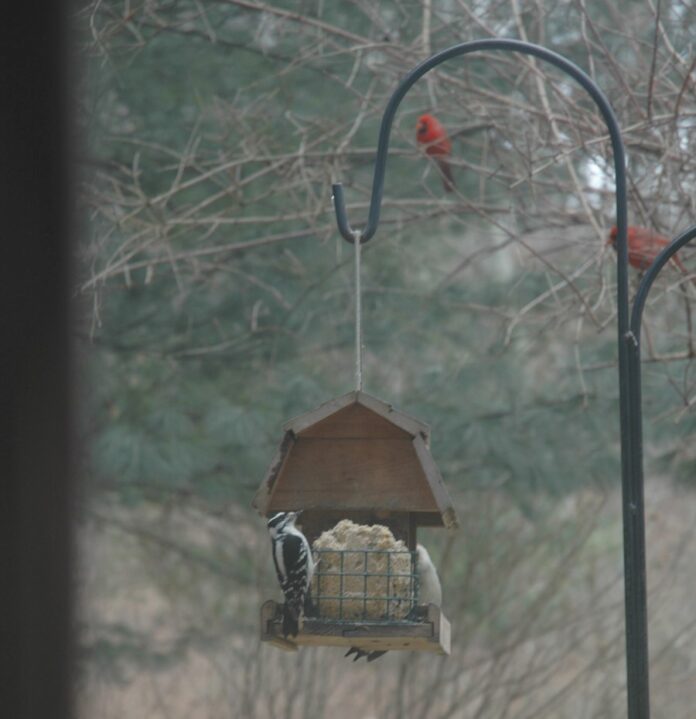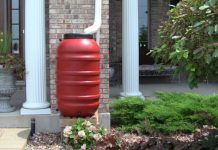By Melinda Myers
Winter has many birds searching for food. Lend a helping hand by starting, continuing, or expanding your bird-feeding efforts.
If you are not able to plant a shepherd’s crook in the ground to hang your feeder, look for other options. Sturdy tree branches, hooks and supports used for summer hanging baskets, and deck railings are a few possibilities.
Recycle your Christmas tree into a bird shelter and feeder after the holidays. Move it outdoors and decorate it with slices of oranges, strands of cranberries, and other songbird treats.
Place bird feeders within three feet and no more than 30 feet away from your home to reduce the risk of deadly window collisions. Further reduce the risk by hanging streamers in front of the windows or placing decals on the windows.
Select locations with nearby trees and shrubs that provide songbirds with a quick escape from predators. Avoid low-growing shrubs that provide cover for outdoor cats that kill over a billion songbirds each year.
Avoid excessively windy, wet, or otherwise exposed areas that may discourage birds from visiting your feeders. Provide a bit more shelter from the elements by fastening an evergreen bough above the feeder.
Add a source of water to support and attract a wide variety of birds. Those in colder areas will need a bubbler, heater, or aerator to prevent the water from freezing. As always, it is important to keep your birdbath clean.
Purchase quality birdseed mixes. These may cost more but contain a higher percentage of seeds the birds like to eat. This means more quality seed for each dollar spent. Many cheaper brands fill their mixes with milo, oats, and wheat that the birds tend to discard in favor of more desirable seeds in the mix.
Use a variety of seeds and feeders to attract a diverse group of birds. And don’t forget about ground feeders like juncos, quails, and mourning doves.
Invite songbirds to your winter garden Black oil sunflower seeds are a favorite of cardinals, buntings, chickadees, finches, grosbeaks, jays, juncos, nuthatches, titmice, and woodpeckers. They are also a favorite of squirrels. Install squirrel baffles if you don’t want these critters devouring all your bird seed. Or use safflower seeds instead to keep cardinals, grosbeaks, finches, doves, and sparrows happy instead of the squirrels.
Nyjer thistle is a favorite of finches, goldfinches, siskins, and buntings. Purchase fresh seed and use a feeder that keeps it dry. Finches and others will tend to avoid stale and wet Nyjer thistle seed.
White millet is another popular seed and a favorite of ground feeders such as juncos, siskins, and towhees. You will also find cardinals, finches, grosbeaks, and sparrows feasting on them.
Nuts and cracked corn attract Jays, woodpeckers, nuthatches, and brown creepers. Mix them with other seeds or include a specially designed nut feeder in your landscape.
Suet is an excellent food for woodpeckers, nuthatches, chickadees, and jays. You may even find other birds like wrens and cardinals visiting your suet feeders.
Help the birds find new sources of food by sprinkling some seed on the ground near the feeders. If birds dine on the scattered seed but still don’t visit the feeders, keep leading them closer with additional seed.
Keep your feeders clean and filled so the birds know there is a reliable source of food. If your feeders go empty, it may take a few days to attract them back to your yard.
Evaluate your existing landscape and look for opportunities for adding new plants that provide food, shelter, and nesting spaces for birds. Creating a more bird-friendly landscape helps increase the number and variety of winged visitors. Their presence adds color and motion to the winter landscape and watching them will help lift your spirits.
Melinda Myers is a columnist. Her website is www.MelindaMyers.com.














